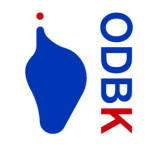Diversity in the art world is often showcased in a way that is similar to that of company websites and university brochures. In them, a handful of different skin colors and foreign names are displayed as representations of their overall diversity. The problem with this type of tokenism is that it undermines and oversimplifies the actual meaning and importance of diversity. So, what does it mean to be diverse, and which implications does this have in the long run?
Let me start by pointing out that the importance of diversity is not in cosmetics, but in the way it changes our perspective on what art is and what it can be. In my home city of Bogotá (Colombia), art spaces have always been unavailable to a large portion of the population. Dueling with its colonial past, people from different ethnicities and backgrounds have been highly underrepresented. Because of this, during the last 20 years, artists have taken to the streets to make their voices heard, or rather seen. Graffiti was made legal back in 2011, after being criminalized and persecuted. Today, it is one of the most important art forms in the country, with world-renowned artists creating murals all over the world. However, more important than the differences in the spaces they inhabit, are the variations in the images themselves. Diverging from Eurocentric forms of representation, the works of these artists present faces and themes that are often overlooked. In the aftermath of an almost 50-year-old armed conflict, the faces of black and indigenous people, farmers and women, bring visibility to these marginalized populations. They cover the walls in the capital of the country as if saying “we are here too”. In this way, diversity has become a form of protest, a way to oppose the exclusionary ways of leading art institutions. I bring this example forth as a way to think about how we relate to images at large. In a world where art has become ever more global, it is worth rethinking the way we interact with art from different cultures. Is global art going to become a commodity that adapts to long-established Eurocentric perceptions of art? Or should it rather be a bridge, a way for us to engage with others across the world representing diversity in forms of representation and though?
It is essential to understand the weight these questions have on the world to come, beyond economic matters. For centuries, the misunderstanding and misrepresentation of non-European art have supported ideas of racial superiority. The way we perceive the capacity of others to convey sensitivities affects the way we perceive others at large. It is because of this that it is so important to create diversity in the art world. Because, in the long run, this will influence the way we engage with other cultures, even beyond the scope of museums and galleries.
In ODBK we care and procure mechanisms to create diversity in the art world. But in order to succeed we need your participation, Join us! www.odbk.tk


